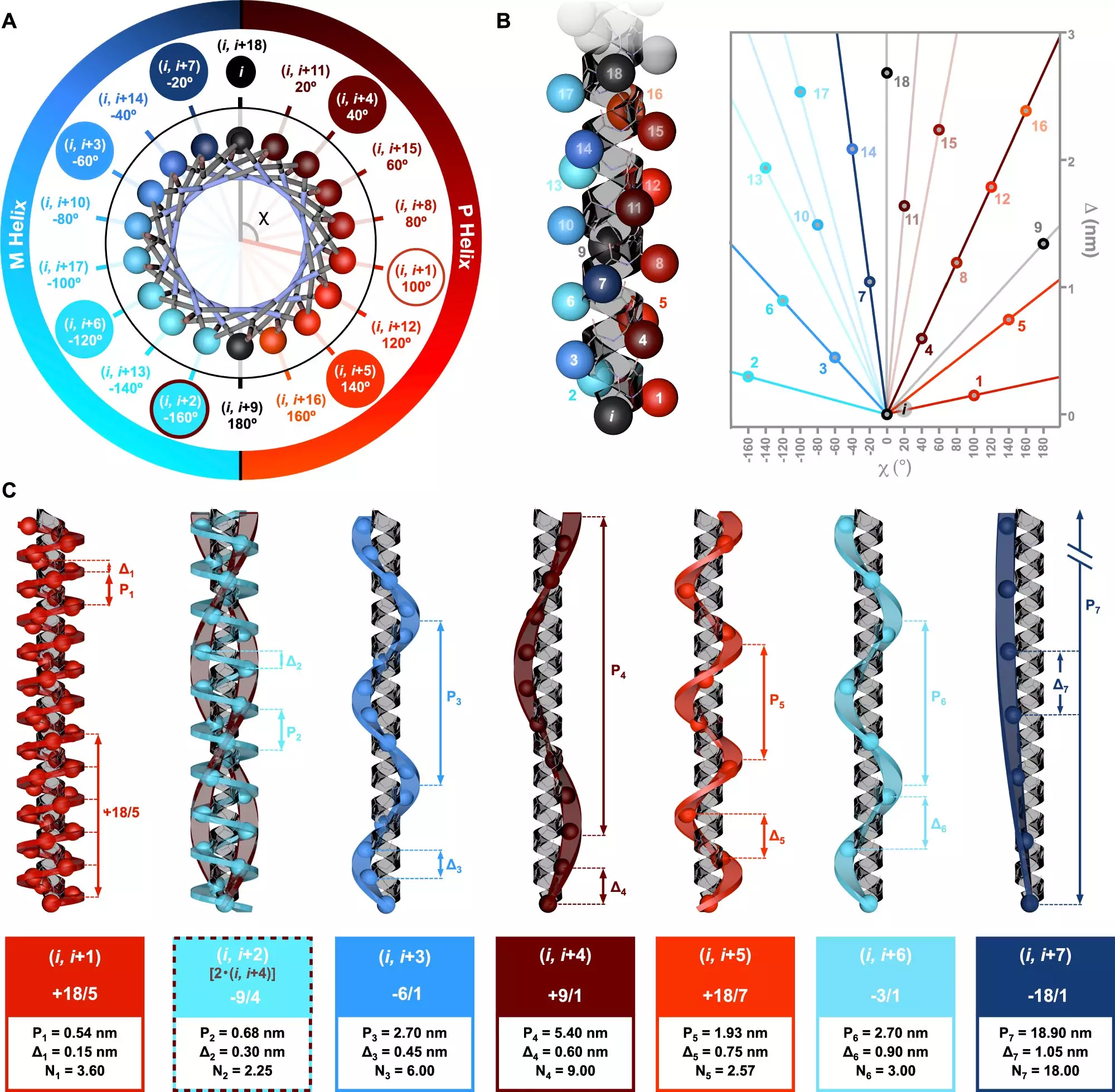Helices are critical configurations that are integral to the function of many biological molecules, particularly proteins. Understanding the formation of helical structures offers insights into the molecular mechanics that dictate not only the stability of these proteins but also their functional capabilities within the organism. Helices arise through the repetitive arrangement of amino acids, which are the building blocks of proteins, each contributing to the orientation and interactions of the overall helical form. This deepened comprehension is essential as it lays the groundwork for innovations in biochemical applications and therapeutic strategies.
Chirality is a fundamental characteristic that greatly impacts molecular behavior. In peptide structures, the configuration of amino acids can generate unique chiral arrangements, influencing how these peptides interact with one another and with other molecules in biological systems. Recent studies emphasize that this chiral information is not merely a structural curiosity; rather, it plays a pivotal role in biological functions and catalysis. It is through this chiral layering that proteins achieve their specificity and effectiveness in biological processes.
A groundbreaking research endeavor spearheaded by Dr. Julián Bergueiro and his team at the Center for Research in Biological Chemistry and Molecular Materials (CiQUS) sheds light on the correlation between amino acid sequences and helical properties. In their study, published in Nature Communications, they meticulously investigated various helical forms and discovered a symmetry model that enhances understanding of molecular relationships within these structures. By utilizing advanced computational methods alongside circularly polarized light spectroscopy, the researchers were able to observe how these helices interact with chiral light and confirm theoretical predictions about their properties.
The implications of these findings are vast, especially in the context of synthetic biology and material science. By manipulating the sequence of amino acids, researchers can now envision designing helices with specific properties tailored for diverse applications. This capability extends far beyond mere academic curiosity; it opens avenues for creating bespoke proteins that can be employed in drug delivery systems, tissue engineering, and the development of biocompatible materials. The ability to control helix formation presents an evolutionary leap in macromolecular engineering, providing a toolset for generating customized biopolymers with desired functionalities.
The exploration of helical structures and their chirality marks a pivotal moment in the field of peptide chemistry. The insights gleaned from studies like those led by Dr. Bergueiro are transitioning our understanding of molecular architecture from a descriptive framework to one that actively informs the design and synthesis of new compounds. As we continue to unravel the complexities of these structures, the potential for innovation in medical and technological applications expands, promising a future where engineered peptides may play a critical role in solving some of our most pressing health and environmental challenges.

